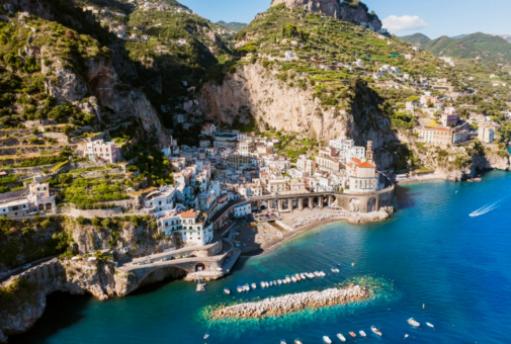The picturesque town of Amalfi, nestled along the rugged cliffs of the Amalfi Coast in Italy, has long been admired for its stunning landscapes, rich history, and vibrant culture. As tourism continues to boom in this idyllic destination, the delicate balance between preserving Amalfi's cultural heritage and catering to the demands of modern travelers has become increasingly important. In order to safeguard the traditions and practices that have defined Amalfi for centuries, community involvement and strategic preservation efforts are essential. It is crucial for both locals and tourists alike to work together to ensure that Amalfi remains a timeless and authentic destination for generations to come.

Balancing Tourism and Cultural Preservation in Modern Amalfi
With its stunning natural landscapes, historical sites, and vibrant local culture, it is no wonder that tourists flock to Amalfi year-round. However, with the influx of visitors, there comes a challenge in balancing the needs of the tourism industry with the preservation of Amalfi's rich cultural heritage.
One of the key ways in which Amalfi has addressed this challenge is by implementing strict regulations and guidelines for tourism development. By limiting the construction of new hotels and resorts, Amalfi has been able to prevent overdevelopment and preserve its unique character. Additionally, the town has worked to promote sustainable tourism practices, such as encouraging visitors to respect local customs and traditions.
Community involvement has also played a crucial role in protecting Amalfi's cultural heritage. Local residents have been actively involved in initiatives to safeguard historical sites and promote traditional practices. By engaging with the community and seeking their input, Amalfi has been able to ensure that preservation efforts are aligned with the needs and values of the people who call the town home.
Furthermore, strategies have been implemented to preserve traditional practices in the face of tourism. By promoting cultural events, such as festivals and food markets, Amalfi has been able to showcase its unique traditions to visitors while also generating income for the local economy. Additionally, efforts have been made to educate tourists about the importance of preserving Amalfi's cultural heritage, encouraging them to support local artisans and businesses.
Overall, the balance between tourism and cultural preservation in modern Amalfi is delicate but achievable. By implementing sustainable development practices, engaging the local community, and promoting traditional practices, Amalfi has been able to maintain its charm and authenticity while also benefiting from the economic opportunities that tourism brings.
Community Involvement in Protecting Amalfi's Cultural Heritage
Community involvement is crucial in protecting Amalfi's cultural heritage. By actively engaging local residents in preservation efforts, Amalfi can ensure that its rich history and traditions are passed down to future generations. Through community-led initiatives, residents can take ownership of their cultural heritage and work together to safeguard it from the impacts of tourism. Collaboration between residents, local authorities, and preservation organizations can facilitate the development of sustainable practices that prioritize the protection of Amalfi's unique identity. By involving the community in these efforts, Amalfi can strike a balance between promoting tourism and safeguarding its cultural heritage for years to come.
Strategies for Preserving Traditional Practices in the Face of Tourism
One strategy that can be effective in this regard is implementing strict regulations and guidelines for tourism activities. By limiting the number of tourists allowed to visit certain sites or participate in cultural events, the impact on traditional practices can be minimized. Additionally, promoting sustainable tourism practices, such as encouraging visitors to support local artisans and businesses, can help preserve traditional practices by providing economic support to those who uphold them.
Collaborating with local communities and involving them in decision-making processes is another crucial strategy for preserving traditional practices. By engaging community members in discussions about the impact of tourism on their cultural heritage, solutions can be developed collaboratively that benefit both the local population and tourists. This can also help ensure that traditional practices are respected and upheld, even as tourism continues to grow.
Educating tourists about the importance of preserving traditional practices is essential for their continued existence. By providing information about the history and significance of these practices, visitors can gain a greater appreciation for the cultural heritage of Amalfi and be more mindful of their impact on it. Offering cultural experiences, such as workshops or performances, can also help tourists connect with traditional practices in a meaningful way and encourage them to support their preservation.
Overall, a combination of strict regulations, community involvement, and tourist education is key to preserving traditional practices in the face of tourism. By taking proactive measures to protect cultural heritage, Amalfi can continue to thrive as a destination while maintaining the authenticity and richness of its traditions.
